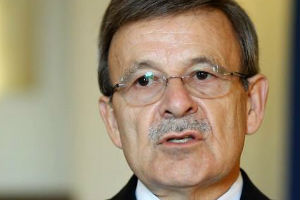 Here is a tip for all of you fundraising professionals and volunteers out there: ” Women are powerful donors in their own right, and we settled most Women’s suffrage issues almost a century ago.” Those of us who cannot understand this simple yet powerful idea are “cruisin’ for a bruisin’” as a friend of mine used to say.
Here is a tip for all of you fundraising professionals and volunteers out there: ” Women are powerful donors in their own right, and we settled most Women’s suffrage issues almost a century ago.” Those of us who cannot understand this simple yet powerful idea are “cruisin’ for a bruisin’” as a friend of mine used to say.
You’re probably wondering where this is coming from . . . so let me provide a little context. In the last few weeks, I’ve heard people twice say something that made me wonder if we were living in 1913 or 2013. Here are the two examples:
- Some very nice woman was receiving an award and there was a group discussion about whether or not to tell her or surprise her from the podium. The decision was to talk to her husband and ask him to make the decision.
- One group wants to get closer to a donor because he is one of those “very influential philanthropists” in town. You know the type. So, the decision was to start cultivating his daughter’s husband.
The first example is innocent enough and didn’t raise any red flags, but when put together with the second example it just got me thinking about the concept of “Women in Philanthropy”.
Did you know that Indiana University – Purdue University Indianapolis’ Center on Philanthropy has an internal division named the “Women’s Philanthropy Institute“? Here is a blurb from their website:
“The Women’s Philanthropy Institute (WPI) studies how and why gender matters in philanthropy. Men’s and women’s motivations for giving and patterns of giving differ. What works for men in philanthropy may not work for women. As women’s economic power and educational achievements continue to increase in the 21st century, women are leveraging that power to influence philanthropic decision-making and to transform the philanthropic landscape in many ways.”
When I read something like this, it makes me immediately think:
- Wow! Men and women make philanthropic decisions differently. I wonder how I should incorporate that from a strategic and tactical perspective into a written resource development plan?
- If women are as influential as they appear to be in philanthropy, then why are we still doing these weird cultivation dances with their fathers and their husbands?
Am I off base? Maybe a little, but I know that I am close to hitting on something big.
A few weeks ago I was talking to a board volunteer who is a strong woman. She and I are working on a fundraising project together, and she talked about a conversation that she and her husband had about a particular charity. To make a long story short, here are the highlights:
- She is concerned about the organization’s financial health.
- He knows his wife too well and knows that she will give this organization more money to help them out.
- He strongly stated his wishes not to let their philanthropy get out of hand because he wants to retire in a few years.
I look at this conversation and now see things very clearly. She is the person who makes charitable giving decisions in that family. He is pleading his case to “The Decider”. I wonder how many charities don’t see that and try to engage him first?
Still not convinced that your agency needs to do a better job planning for and engaging women in your resource development efforts? Then please consider what Betsy Brill wrote in Forbes magazine on August 18, 2009:
“Women now control more than half of the private wealth in the U.S. and make 80% of all purchases. According to Boston College’s Center on Wealth and Philanthropy, women will inherit 70% of the $41 trillion in intergenerational wealth transfer expected over the next 40 years. In addition to controlling wealth and consumer activity, women tend to donate more of their wealth than men do. A Barclay’s Wealth study titled Tomorrow’s Philanthropist, released in July 2009, showed that women in the U.S. give an average of 3.5% of their wealth to charity, while men give an average of 1.8%.”
What is your non-profit agency doing to make this adjustment? Will the next generation of philanthropists in America be dominated by women? Please use the comment box below to share what your agency is doing about this resource development trend?
Here’s to your health!
Erik Anderson
Founder & President, The Healthy Non-Profit LLC
www.thehealthynonprofit.com
erik@thehealthynonprofit.com
http://twitter.com/#!/eanderson847
http://www.facebook.com/eanderson847
http://www.linkedin.com/in/erikanderson847




 I hope your New Years celebration was fun, safe and full of family and friends. Welcome to 2013 and an exciting new opportunity for you and your non-profit organization.
I hope your New Years celebration was fun, safe and full of family and friends. Welcome to 2013 and an exciting new opportunity for you and your non-profit organization. Happy New Years Eve! Are you ready for 2013?
Happy New Years Eve! Are you ready for 2013? “It was about this time that another projector, the Rev Gilbert Tennent, came to me with a request that I would assist him in procuring a subscription for erecting a new meeting-house. It was to be for the use of a congregation he had gathered among the Presbyterians, who were originally disciples of Mr. Whitehead.
“It was about this time that another projector, the Rev Gilbert Tennent, came to me with a request that I would assist him in procuring a subscription for erecting a new meeting-house. It was to be for the use of a congregation he had gathered among the Presbyterians, who were originally disciples of Mr. Whitehead. Welcome to O.D. Fridays at DonorDreams blog. Every Friday for the foreseeable future we will be looking more closely at a recent post from John Greco’s blog called “
Welcome to O.D. Fridays at DonorDreams blog. Every Friday for the foreseeable future we will be looking more closely at a recent post from John Greco’s blog called “ This phenomenon is called the “crowding out effect” and I wrote about it in the following blog posts in 2011:
This phenomenon is called the “crowding out effect” and I wrote about it in the following blog posts in 2011: The crowding out effect is real, and it is something non-profit organizations need to understand and deal with. If not, then I advise putting the following age-old expression in a frame above the boardroom door: “The road to hell is paved with good intentions.”
The crowding out effect is real, and it is something non-profit organizations need to understand and deal with. If not, then I advise putting the following age-old expression in a frame above the boardroom door: “The road to hell is paved with good intentions.” Fundraising policies
Fundraising policies Yesterday morning Jimmie Alford died of an apparent heart attack at the age of 69. This sad news started circulating slowly as the day unfolded, and then it snowballed into an online viral event and my email inbox is full of people sharing the news, their grief, and their disbelief.
Yesterday morning Jimmie Alford died of an apparent heart attack at the age of 69. This sad news started circulating slowly as the day unfolded, and then it snowballed into an online viral event and my email inbox is full of people sharing the news, their grief, and their disbelief. It is that time of the year when retailers are pulling out every stop in their little bag of tricks to get your attention and hopefully your holiday dollars. One of those shiny objects that some retailers use is called cause related marketing (CRM). Wikipedia does a nice job of
It is that time of the year when retailers are pulling out every stop in their little bag of tricks to get your attention and hopefully your holiday dollars. One of those shiny objects that some retailers use is called cause related marketing (CRM). Wikipedia does a nice job of  Welcome to O.D. Fridays at DonorDreams blog. Every Friday for the foreseeable future we will be looking more closely at a recent post from John Greco’s blog called “
Welcome to O.D. Fridays at DonorDreams blog. Every Friday for the foreseeable future we will be looking more closely at a recent post from John Greco’s blog called “ In that five-minute period of time as I paced the back of the banquet hall, there was a moment where I stopped listening and worrying about LaShaunda and I focused on what was happening in the room:
In that five-minute period of time as I paced the back of the banquet hall, there was a moment where I stopped listening and worrying about LaShaunda and I focused on what was happening in the room: